10 days may still not feel like enough time given the sheer number of options for places to visit in Japan. The country can feel a little overwhelming for some, especially when people recommend so many destinations.
However, with our 10-day Japan itinerary plan, we have put together some of the most amazing and essential places to visit and explore during your adventure in Japan. Each place ticks off a different goal, some being historically or culturally focused, while others are social and shopping. Every day is jam-packed with a variety of activities to choose from! So, let’s take a look at your next adventure in Japan!
Flip Japan Guide-Recommended 10-Day Japan Itinerary
Day 1: Tokyo
Skytree (Observatory)
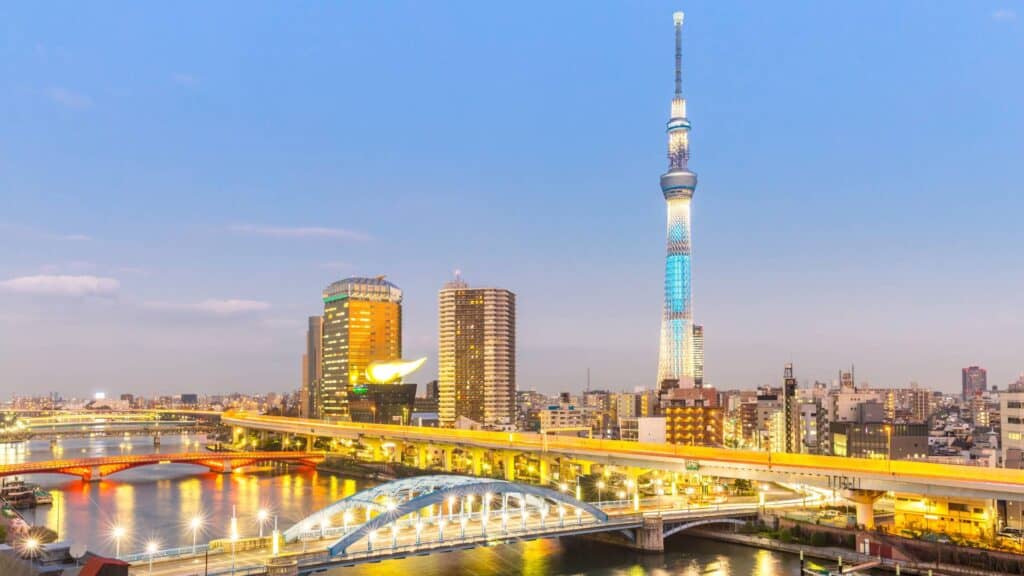
The Tokyo Skytree, situated in Sumida, the centre of Tokyo, is now acknowledged as the new representation of Japan. Built using the most cutting-edge technology and traditional Japanese craftsmanship, and standing at a staggering 634 metres tall, the Tokyo Skytree was recognised by Guinness World Records as the tallest tower in the world in November 2011.
You can ascend to the 350-metre-high Tokyo Skytree Tembo Deck using the elevator. From here, you may take in the breathtaking city views and even see as far as Mount Fuji! The Tembo Galleria, an incredible tube-shaped hallway that gives you the impression of walking in the sky, allows you to literally walk up to the summit of the tallest tower in Japan.
Solamachi
At the foot of the Tokyo Skytree is a sizeable shopping and entertainment centre called Tokyo Solamachi. This commercial complex, which debuted in May 2012, has 312 stores offering a wide range of products. In addition to serving as a key hub for Tokyo with its bustling new downtown ambience, Tokyo Solamachi seeks to be a gateway connecting the city centre with the Tokyo Skytree and the Tobu railway line. It is frequently visited by tourists from Japan and other countries.
Sumo Show w/ Ex Sumo Wrestlers
The national sport of Japan, sumo, has its origins in the neighbourhood of Yokoami in Sumida-ku, Tokyo. With the Ryogoku Kokugikan, numerous sumo stables housing wrestlers, and numerous sumo fans still frequenting the area today, the region has a long history of being connected to sumo. Furthermore, a monument has been built to commemorate the birthplace of Yohei Sushi, who is credited with creating nigiri-zushi using wasabi, a dish enjoyed by people all over the world. Sumo, otekebori, sushi, and other staples of Japanese culture may all be found in Ryogoku.
Ramen-Making Experience
Here, you may learn the Japanese-style technique for creating fresh ramen. Make two bowls of fresh ramen while working in an authentic Japanese ramen kitchen. You will be given access to all the necessary Japanese cooking tools and shown the standard methods used by a skilled ramen chef! To prepare the ramen noodles, first boil them, then ladle the broth (soup and spices). Finally, add the noodles to the soup along with any desired toppings and arrangements.
Yukata Experience

Given its lighter fabric and looser fit, a traditional Japanese yukata is a style of apparel worn throughout the summer and is often seen at summer festivals. Traditional Japanese performing arts and dances also feature it. To truly experience Japanese culture, take the chance to dress in a traditional yukata and walk the streets of Asakusa.
Tea Ceremony Experience
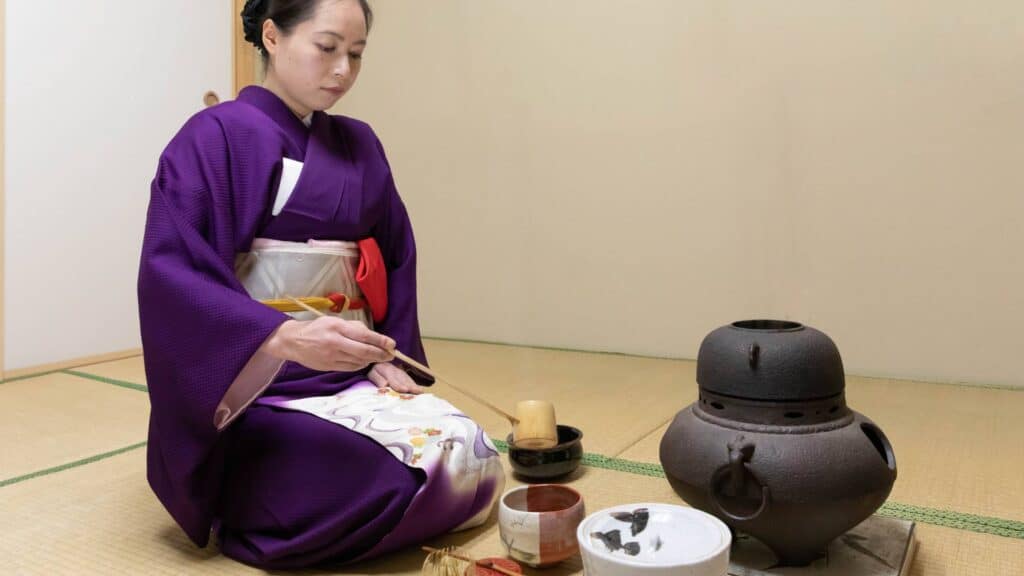
Traditional Japanese society places great importance on tea ceremonies. Experience and take pleasure in a tea ceremony at Jidaya, along with an explanation of the origins and tenets of Japanese tea ceremonies. Get a thorough explanation of the tea-making process as well as tips on how to use tea accessories like an expert.
Sensoji Temple, Shopping street
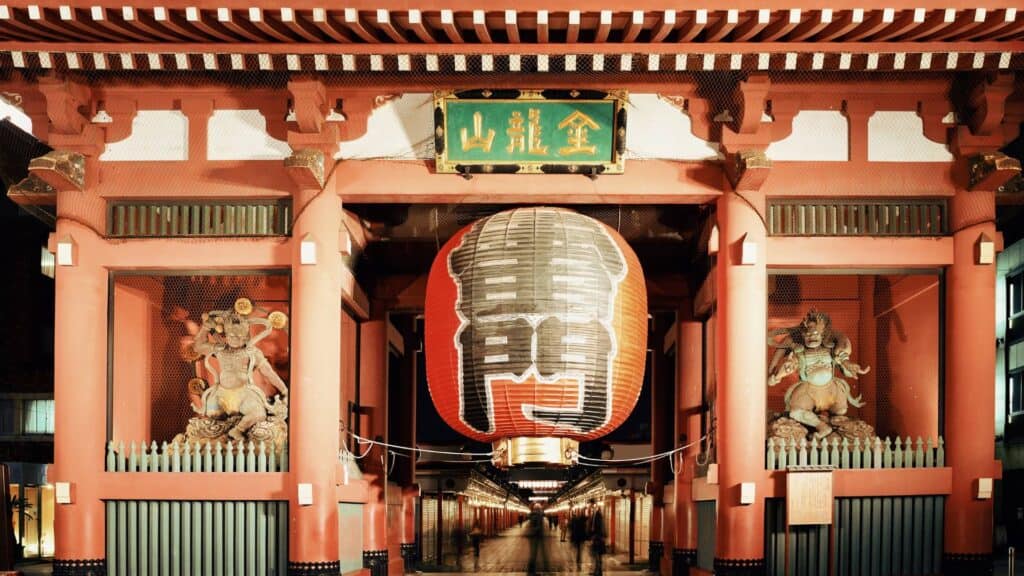
When it comes to popular tourist destinations in Tokyo, Senso-ji Temple is the first name that springs to mind. It is not an overstatement to say that Senso-ji is a world-renowned tourist destination, receiving about 30 million visitors each year from both inside and outside of Japan. Asakusa’s emblem is the enormous red lantern that hangs over the Kaminarimon (Thunder Gate) at the entrance, and the neighbourhood around the temple is a city that still exudes an air of Edo (old Tokyo).
For your first day in Japan, we recommend ramen for lunch and kaiseki for dinner.
Day 2: Tokyo
Tokyo Tower
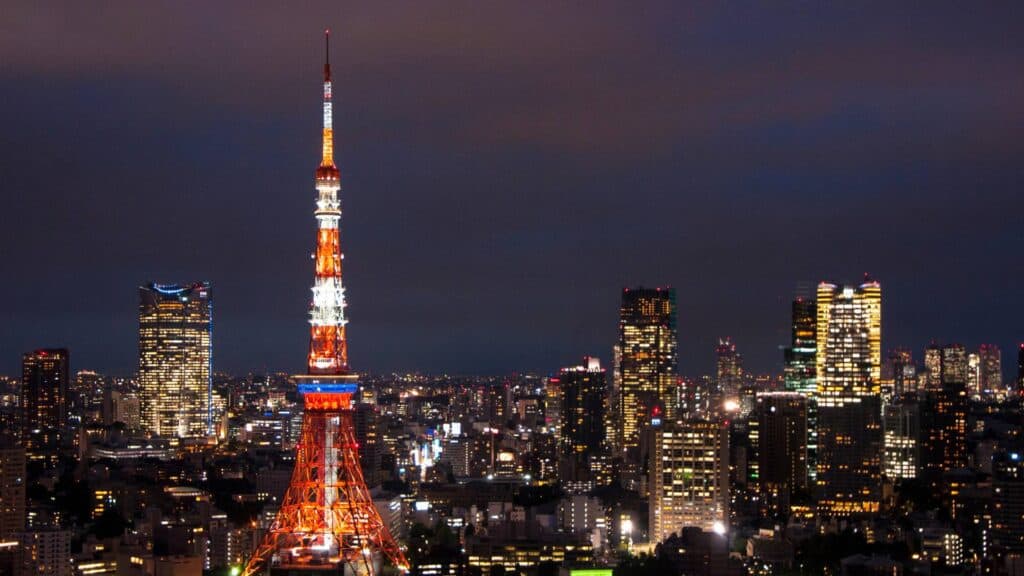
Tokyo Tower, the tallest steel tower in the world at 333 metres high and 3 metres taller than the Eiffel Tower, is located in the heart of Tokyo. Tokyo Tower, a symbol of Japan’s post-war re-emergence as a significant economic force, stood as the tallest building in the nation from its construction in 1958 until it was overtaken by the Tokyo Skytree in 2012. Tokyo Tower is a well-known tourist destination and a broadcast antenna.
The tower’s main deck is accessible by elevator or a 600-step stairway and is located at 150 metres (both paid). Despite being at a relatively moderate height, the observatory provides an interesting perspective of the city due to the tower’s strategic placement. A gift shop, a café, and various “lookdown windows” on the floor are also present.
Shibuya
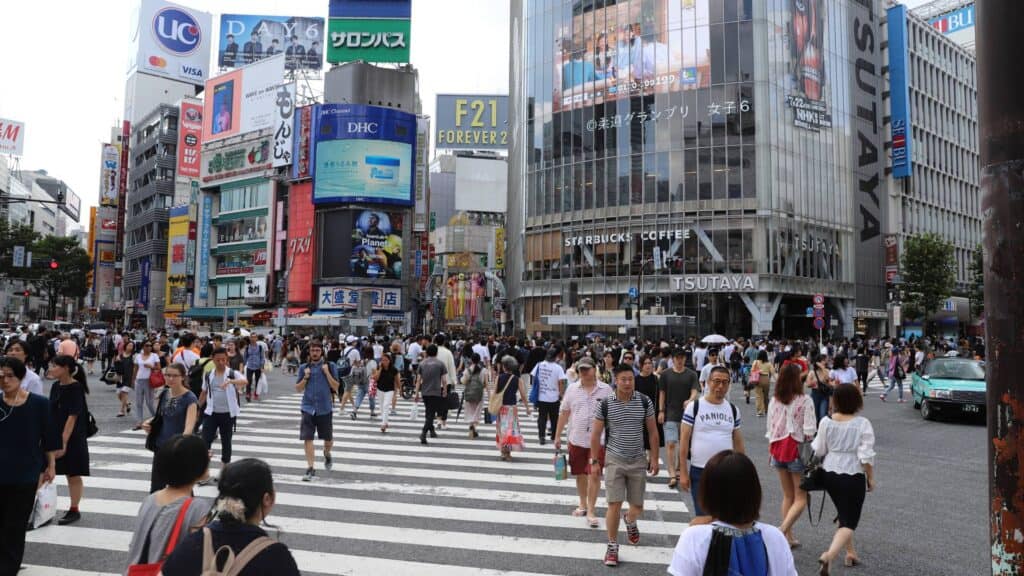
Shibuya is known for the world-famous Scramble Crossing, one of the world’s busiest traffic intersections, with as many as 3,000 people passing through it at a single green light. Shibuya Scramble Square features a total of 212 of the ‘world’s most fashionable’ shops, including those that have arrived for the first time and new business models. You can also visit the Shibuya Sky, the highest point in Shibuya, at approximately 230 metres and 47 storeys above ground.
Harajuku
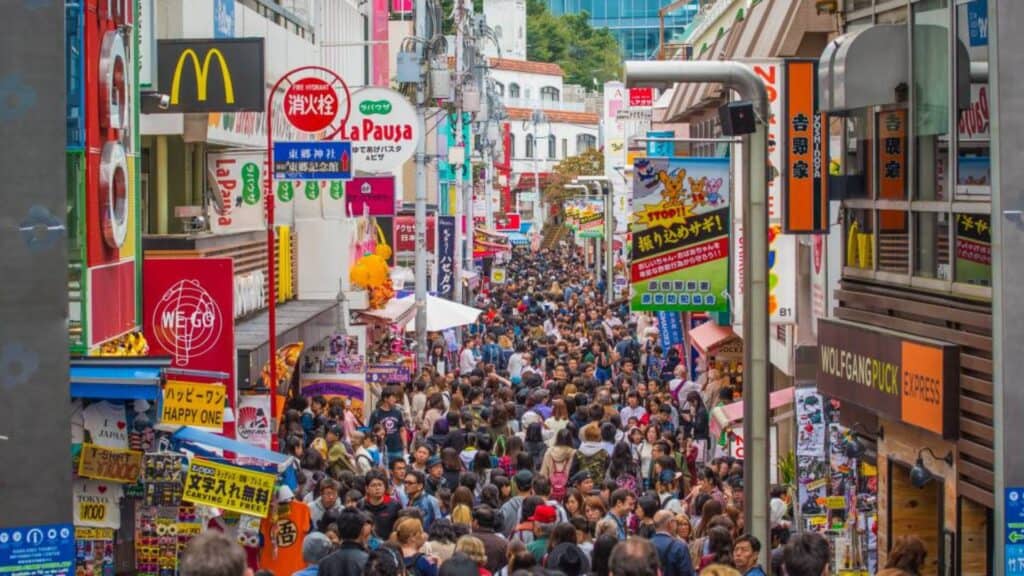
Takeshita-dori has long been known for its take-out shops, including crepes, which are really tasty and eye-catching. The number of unique cafés is also increasing. Harajuku Takeshita-dori is a centre of kawaii culture that now attracts people from all over Japan and the world. The area is also easy to access, being right in front of JR Harajuku Station.
On the opposite side of Harajuku Station is Meiji Jingu, a Shinto shrine dedicated to Emperor Meiji, the 122nd emperor, and Empress Shoken. The 700,000-square-metre Chinju-no-Mori is an artificial forest created with the aim of becoming an “eternal forest” by planting about 100,000 trees donated from all over Japan when the Meiji Jingu was founded. It has the highest number of worshippers in Japan every year for New Year’s visits.
Shinjuku
“Omoide Yokocho” is another name for the Shinjuku West Exit shopping street, which is located just outside the Shinjuku West Exit, and is also known as “Yakitori Yokocho” or “Shonben Yokocho”. It has its roots in the black market that was created around 1946, and with the post-war reconstruction, there used to be about 300 shops. Today, the area is gaining popularity as a drinking district with many small shops selling various dishes such as yakitori, offal stew, and sashimi.
It’s a 3-minute walk from Shinjuku station, so it’s easy to access, and it’s a perfect place for office workers on their way home from work or for partiers to get a drink after a long night. Shinjuku Golden Gai (新宿ゴールデン街) is a restaurant district in Kabukichō 1-chō, Shinjuku-ku, Tokyo. It is lined with nearly 300 bars, including snack bars, and is known to be frequented by writers and people in the film and theatre industry. Most of the bars welcome foreigners, but there are a few advertised as “Japanese-only.”
For Day 2 in Japan, we recommend sushi for lunch and dinner at an izakaya.
Day 3: Tokyo
Tsukiji Fish Market
The Tsukiji Fish Market is known as Japan’s ‘Food Town’. The market comprises a vast variety of traditional Japanese foods from wholesale to retail. There are also numerous restaurants and eateries around the area, using the freshest fish and ingredients of Japan. When the market first originated, it was primarily an area for wholesalers and professionals where products were sold in bulk. However, in recent years, the area has become popular with consumers and tourists, and you are now able to find small meals and bite-size tasters.
Tsukiji Outer Market is and will continue to be the best marketplace for customers to buy fresh seafood, vegetables, and traditional Japanese food materials. If you are unsure how to approach this, take a look at Arigatojapan’s brilliant Tsukiji market tour! This way, you won’t miss any incredible foods or experiences while visiting Tsukiji!
Explore Other Tokyo Neighbourhoods
Ginza
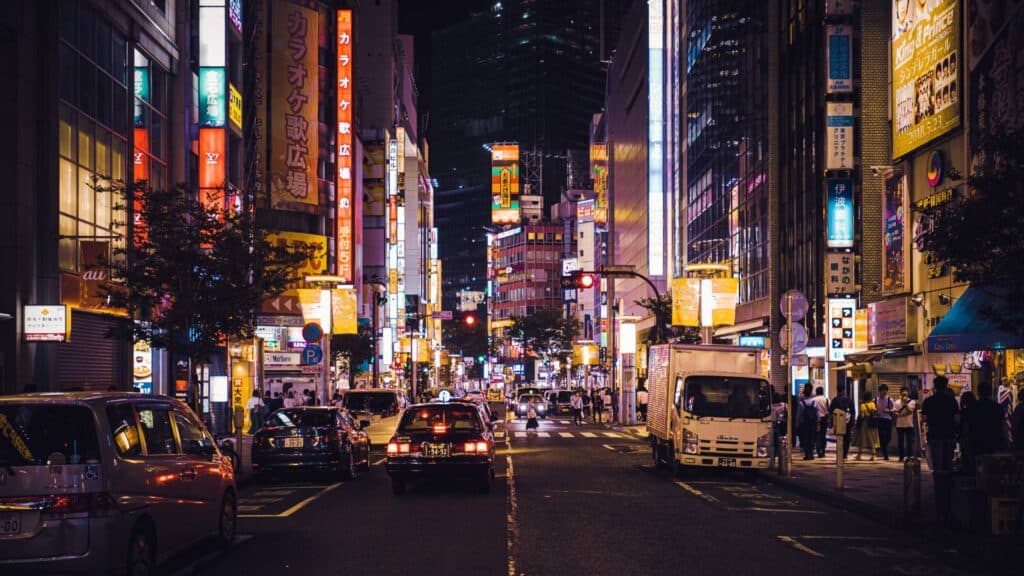
Ginza is a district of Chūō, Tokyo. It is a well-known premium shopping district in Tokyo, home to a number of internationally renowned department stores, boutiques, eateries, and coffee shops. It is regarded as one of the most costly, stylish, and opulent urban areas in the entire world. Ginza seems to have upscale clothing outlets on every corner.
Additionally, you’ll find a number of Michelin-starred establishments, the peak of Tokyo fine dining. Don’t let this fool you into thinking Ginza is inaccessible, though. Go a bit further, and the nicest spots to visit will reveal themselves, tucked away in dimly lit little passageways. Everything is available, from little gift shops to typical izakaya (Japanese bars).
Akihabara
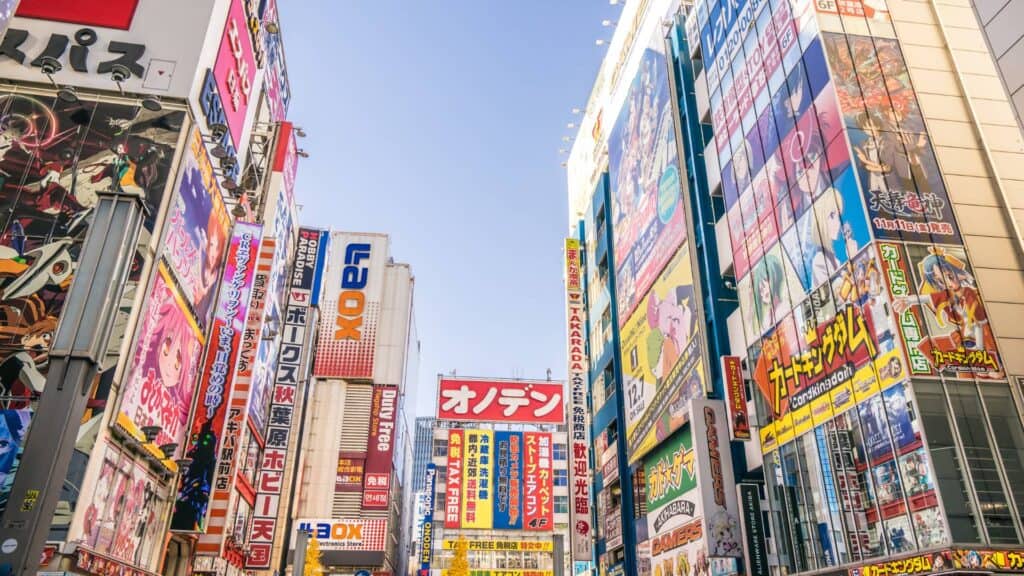
The central Tokyo neighbourhood of Akihabara, also known as “electric town,” is well known for its abundance of electronics stores and has come to be known as the hub of the otaku (die-hard fan) culture in Japan. The district’s electronic stores are home to a wide variety of shops and institutions that specialise in anime and manga. Akihabara has developed into a hub of Japanese otaku and anime culture in recent years, and dozens of shops specialising in collectibles including figurines, card games, anime, manga, and old video games have occupied the spaces between the electronics stores.
Along with shops, a number of other businesses associated with animation have gained popularity in the region, most notably maid cafés (manga kissa), where waitresses dress up and perform as maids or anime characters, and internet cafés where patrons can read comics and watch videos in addition to using the internet.
Shimokitazawa
Shimokitazawa, a lively area of western Tokyo only a few stops from Shibuya, is well-known for its profusion of second-hand shops. You may find anything you need for at least 20% off the original sale price, including everything from designer clothing to brand-new phones. Shimokitazawa is sometimes called “Shimokita” for short because it has many theatres, galleries, live houses, cosy cafés, and izakaya pubs. This is a location in Tokyo that is a must-visit for everyone looking for something special! Since the 1970s, Shimokitazawa has served as the hub of Japan’s counterculture scene. Many of the local galleries and venues support independent artists and creatives from the area.
Nakano
A few stops from Shinjuku and sometimes referred to as “Western Tokyo’s Akihabara,” Nakano is deserving of the moniker “otaku nirvana.” However, given Nakano Ward’s vastness and diversity, even people who aren’t huge manga fans are likely to discover something they like there.
The neighbourhood has mostly withstood Tokyo’s relentless modernisation drive: walk slightly northeast from the station and you’ll discover an old-school, partially pre-war street packed with izakaya, bars, and more; farther north, you’ll find Edo-era temples and peaceful parks. The population is a diverse mix of office employees, college students, and families, and most residents are warm, laid-back, and open for a conversation.
Day 4: Kyoto
Arashiyama Bamboo Forest
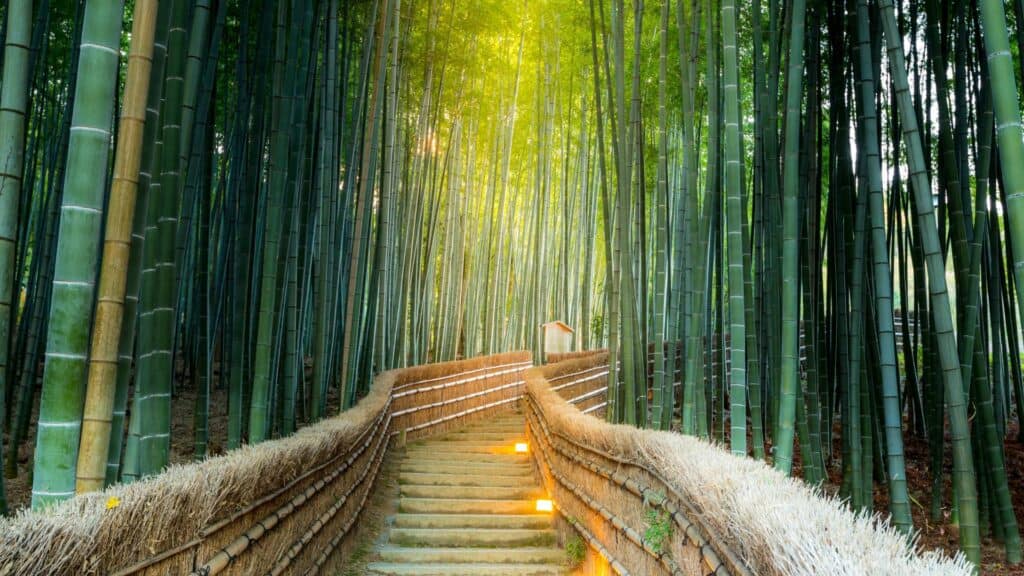
The bamboo grove path is one of Kyoto’s most popular tourist attractions and, along with the Togetsu Bridge, is the symbol of Arashiyama. The bamboo grove stretches for 400m from Nomiya Shrine, through the north side of Tenryu-ji Temple to the Okochi Sanso Garden, where it grows so tall that it covers the sky. The bamboos are at their most beautiful during the autumn foliage season and have also been selected as one of the 100 best cherry blossom viewing spots in Japan.
Kimono Rental

With over 300 years of experience, Kimono Misayama offers an opportunity to walk the streets of Kyoto in a high-quality traditional kimono. This is an amazing chance to take some incredible photos showcasing traditional Japanese culture that can be shared with friends and family!
Kinkaku-ji Temple
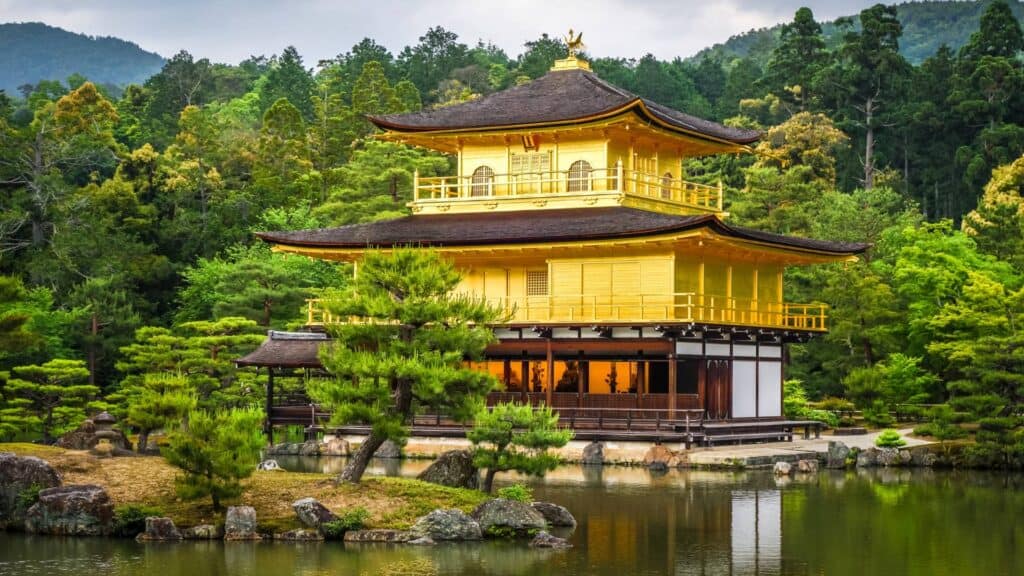
Kinkaku-ji Temple, or the Golden Pavilion, is so well known that its name has come to represent the rest of the surrounding temple, whose name is really Rokuon-ji. The Golden Pavilion was originally constructed as a place to store artefacts of the Buddha, and was designated a UNESCO World Heritage Site in 1994. The temple belongs to the Shokokuji school of the Rinzai sect of Zen Buddhism, whose history can be traced back more than 600 years. The Golden Pavilion is best viewed from across the neighbouring Kagami-ike Pond, where its golden walls are reflected in the water.
Gion District, Pontocho area
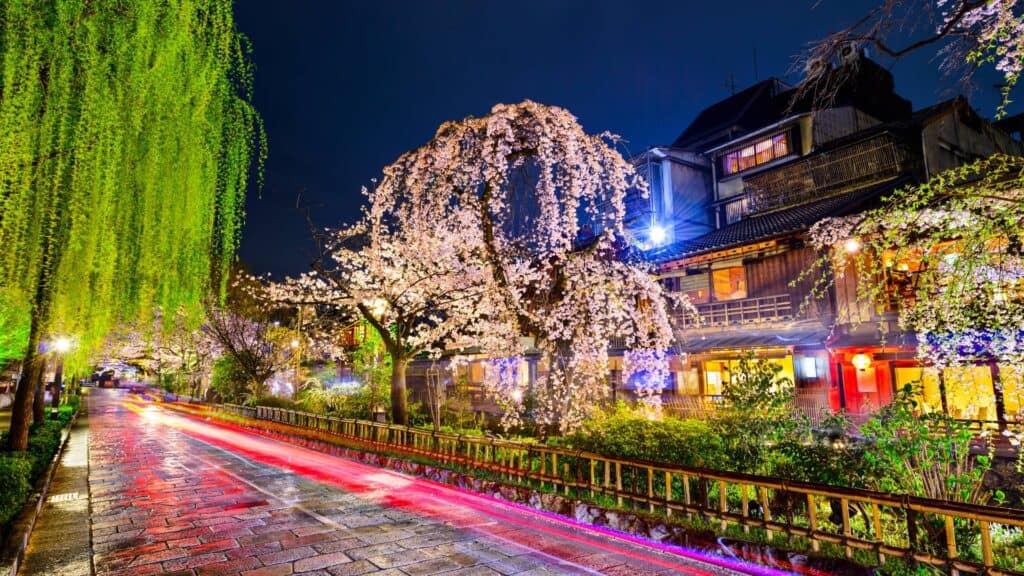
Gion has always been known as Kyoto’s representative downtown area. While it remains a popular destination for both domestic and international tourists due to its accessibility from Kyoto Station and its ideal location for sightseeing, recent measures have banned tourists from certain parts of Gion to preserve the district’s cultural heritage and ensure the privacy of its residents. Despite this, visitors can still enjoy many parts of Gion, especially its renowned shopping streets.
The district surrounds Yasaka Shrine in the centre of Kyoto City, named Gion after the old name of Yasaka Shrine, Gionsha. It is also one of Kyoto’s most popular shopping streets.
On the way from Kawaramachi Station towards Gion and Yasaka Shrine, in a corner of Shijo Dori, there is a narrow alleyway with a gaping hole in it. This is Pontocho. Pontocho is Kyoto’s Hanamachi, a traditional flower quarter with shops on either side of the narrow street, where chochin (lanterns) with a staggered mark wave overhead.
For your first day in Kyoto, get some soba for lunch and enjoy a lovely dinner at one of Pontocho’s riverside restaurants.
Day 5: Explore Outside and Around Kyoto
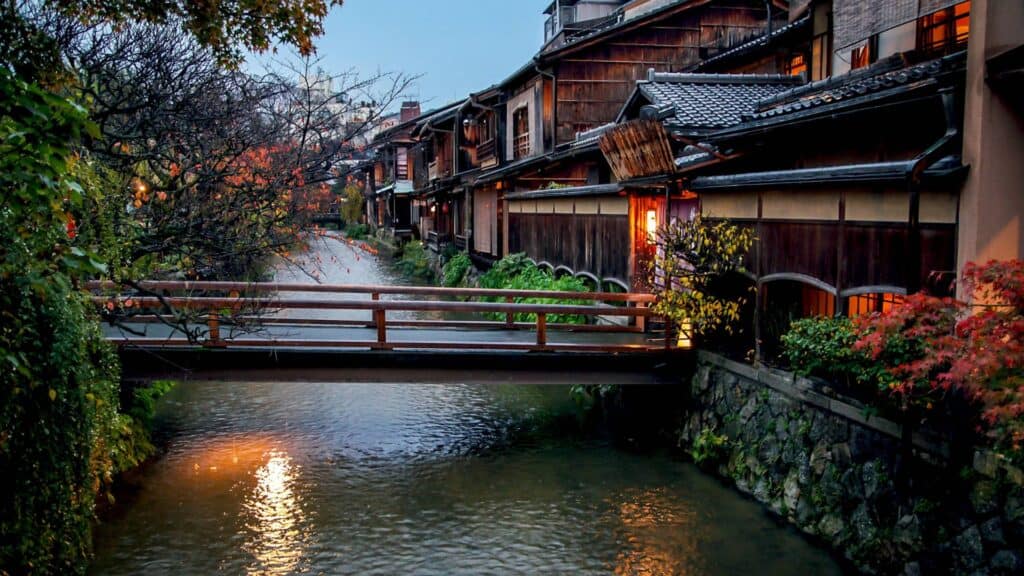
Although Kyoto has many exciting and interesting places to visit, it might be worth taking the opportunity to explore further out and see some of the areas surrounding the city. If you’re interested in a little adventure, consider renting a car for the day and exploring some of the harder-to-reach, remote areas. Here we have a select few places that are worth a visit outside and around Kyoto. Incorporating these into your 10-day Japan itinerary will enhance your travel experience.
Some sights people can visit:
Kiyomizu-dera
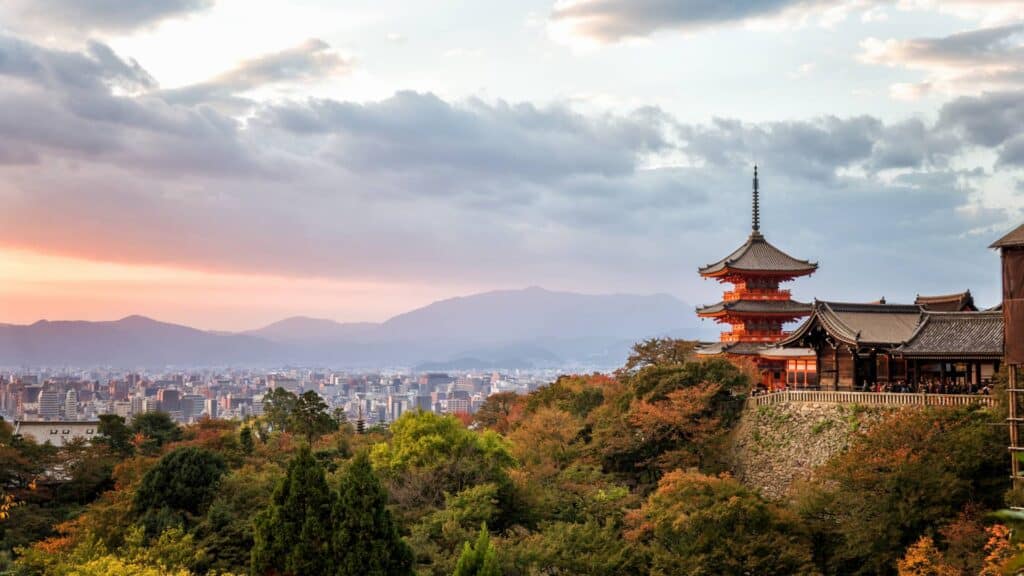
The “Temple of the Pure Water Spring,” also called Kiyomizu-dera, is a Buddhist temple in Kyoto, Japan. The location is well-known for its spectacular viewing platform, three-storey Koyasu pagoda, and the Otowa Spring’s therapeutic, pure waters.
Higashiyama Jisho-ji
The Muromachi period general Yoshimasa Ashikaga used the Ginkaku-ji Temple in northern Kyoto as his residence until it was converted into a temple in 1482 when it was given the name Higashiyama Jisho-ji Temple. The Edo era is when Ginkaku-ji Temple first received its name. For its iconic “wabi” and “sabi” colours, the Kannon Temple, one of Japan’s national treasures, is a sight to behold. A distinctive aspect of the temple is the two-storey structure, which has an upper level in the Zen Buddhist style and a lower level in the home style.
Uji

Between Kyoto and Nara, two of Japan’s most well-known historical and cultural hubs, sits the little city of Uji. Due to its close proximity to these two ancient capitals, Uji quickly established itself as a major cultural hub. Buildings like Byodoin Temple and Ujigami Shrine, the oldest still-existing shrine in Japan, were constructed in Uji during the Heian Period (794 to 1192), when the Fujiwara clan was at its political zenith. The green tea from Uji is also well-known. While the birthplace of tea planting in Japan is thought to have been at Kyoto’s Kozanji Temple, Uji’s tea gained more notoriety for its high quality in the 1100s.
Day 6: Kyoto to Osaka
Fushimi Inari Taisha Shrine
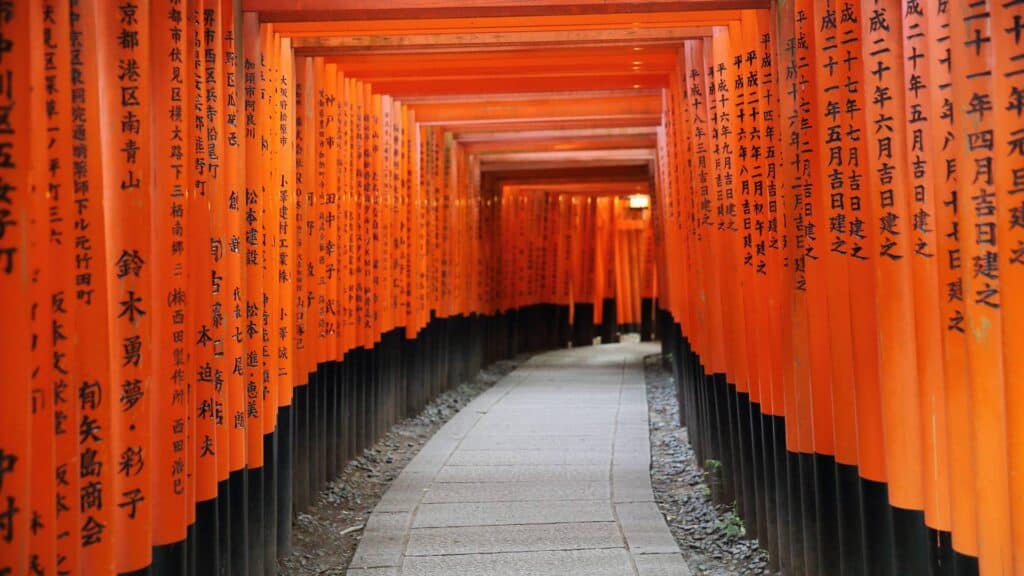
The head shrine of the 30,000 Inari shrines in Japan, this shrine is lined with stately pavilions and auxiliary shrines. Inari Okami is the Japanese kami of foxes, fertility, rice, agriculture, and general prosperity and success. They are widely worshipped across the country and have the most shrines dedicated to them. The numerous vermilion-lacquered torii gates on the approach from behind the main shrine to the inner shrine are known as ‘Senbon-torii’ (a thousand torii). This is a very popular spot for foreign tourists and an amazing photo opportunity.
Yasaka Shrine
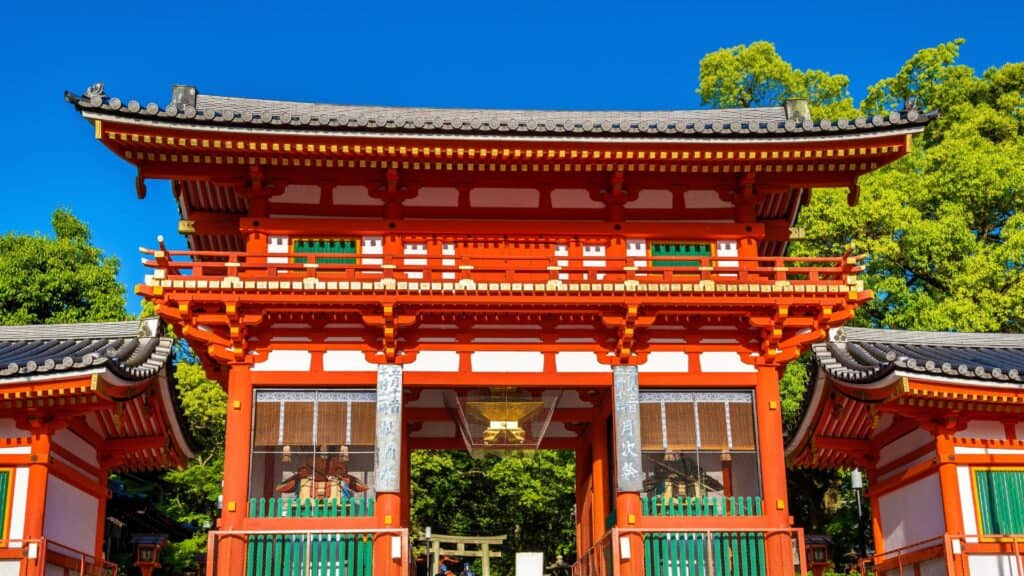
Yasaka Shrine, known and loved as ‘Gion-san’ since ancient times, is the head shrine of all Gion shrines in Japan. The shrine is said to have been founded in the 2nd year of the Emperor Saimei (656). It is reputed to have quelled an epidemic that swept through the capital of Kyoto, and since then it has been worshipped as a shrine to ward off evil spirits. Even today, the shrine is famous for the Gion Festival held in July and the New Year’s Eve Pilgrimage to the shrine.
Famous Kyoto Photo Spot
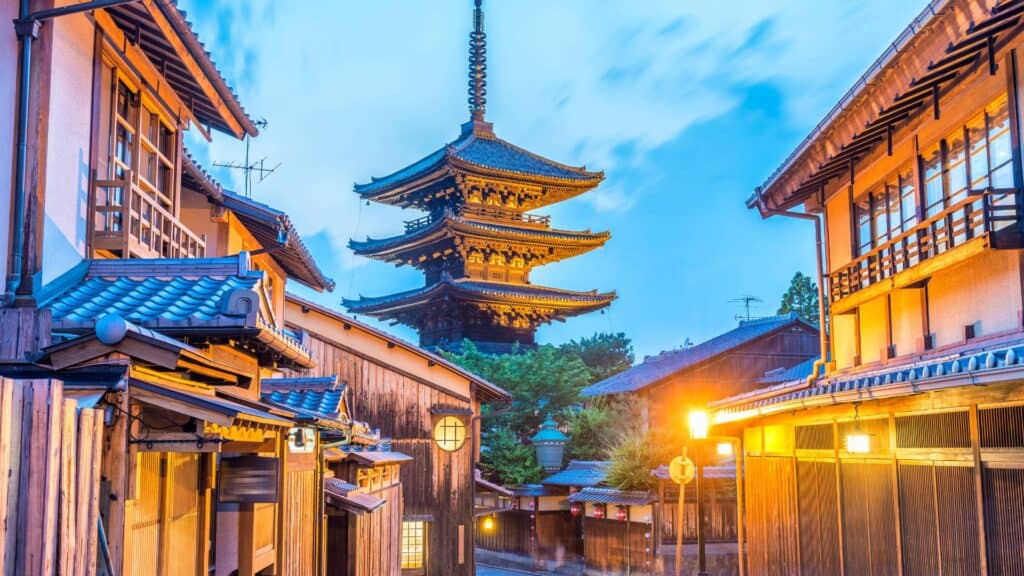
This traditional sloped street is a famous spot to take amazing photos of Kyoto. Located in Ninenzaka, the streets are lined with traditional Japanese homes, teahouses, and cherry blossoms, offering the perfect chance to take a once-in-a-lifetime photo. It is also only a 3-minute walk from Hōkan-ji Temple, which makes for an amazing backdrop to your selfies!
Nijo Castle
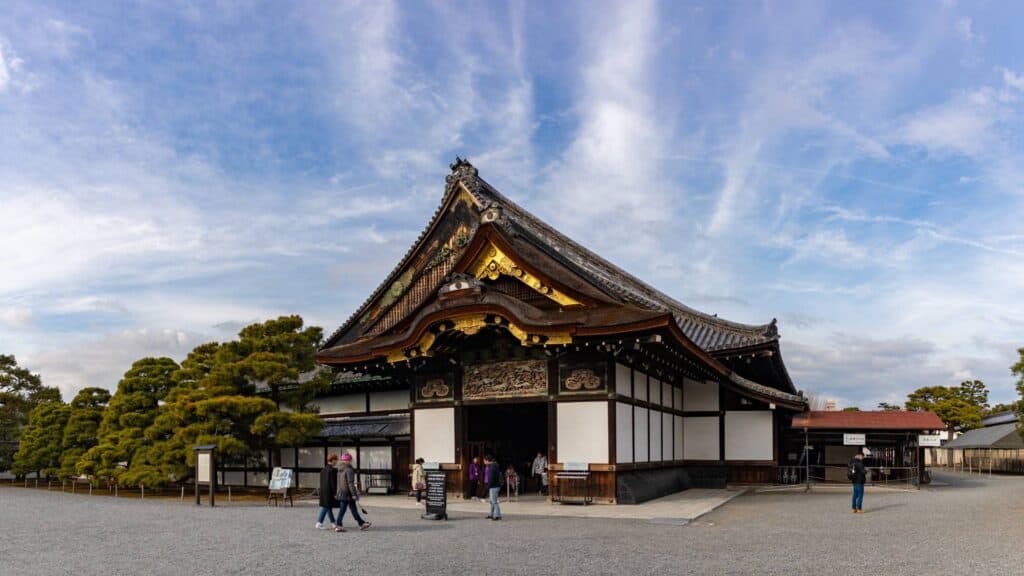
Nijo Castle, built by Tokugawa Ieyasu in 1603, has been the setting for many historical events, including the declaration of the intention to return to the Great Government by Tokugawa Yoshinobu. When the Tokugawa Shogunate fell in 1867, Nijo Castle became an imperial palace for a few years before it was donated to the city. In 1994, Nijo Castle was designated a UNESCO World Heritage Site. You can enjoy the spacious castle grounds, including the gorgeous Karamon gate and three gardens. It is also close to an underground station and city bus stops, making it easy to get to from Kyoto Station.
Toji
To-ji Temple is a national temple (kan-ji) that was built at the time of the relocation of the capital to Heian-kyo. It is the only surviving remnant of Heian-kyo and was considered one of the two major temples of Heian-kyo, along with Sai-ji Temple. Its official name is Kyoohogokokuji Temple. It was the first esoteric Buddhist temple in Japan.
Kobo Daishi Kukai, the founder of the Shingon sect of Japanese Buddhism, made it the first esoteric Buddhist temple in Japan, making To-ji the fundamental centre of Shingon Esoteric Buddhism. Kobo Daishi’s 5-storeyed pagoda was erected in 826 and stands 57 metres tall, making it the tallest wooden pagoda in Japan. This pagoda is visible from most of Kyoto and serves as a symbol for both the temple and the city.
There is also a flea market that takes place on the temple plaza on the 21st of each month. The vendors sell a variety of new and second-hand goods, including toys, kimono, antiques, and food. There is also a smaller version of the market which takes place on the first Sunday of every month.
Travel to Osaka
Solaniwa Onsen
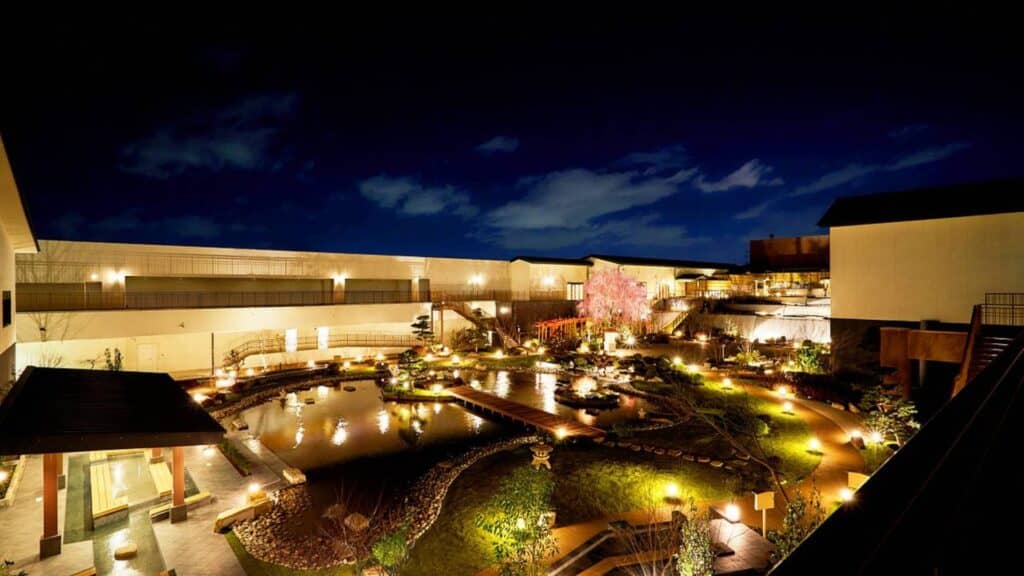
The hot spring water of Bihan, a natural hot spring with weak alkalinity and free-flowing spring water, gushes out from 1,000 metres underground. The baths include an open-air bath with free-flowing hot spring water, a garden-viewing bath overlooking a beautiful green space, a carbonated spring, a bath with various alternatives, a sauna, and an akasuri (a traditional Japanese bath where the body is washed after a long day’s work). There is also a private open-air bath for 2 to 6 people, so you can enjoy your own private space.
On this day, a teishoku lunch is recommended. Then, get some dinner while you’re at Solaniwa Onsen.
Day 7: Osaka
Nagai Botanical Garden
With a total area of 24.2 hectares, the Nagai Botanical Garden is a well-loved urban paradise surrounded by greenery and brimming with seasonal blooms. It is home to almost 1,200 different plant species. There are 11 specialty gardens, including a camellia garden, peony garden, rose garden, hydrangea garden, and herb garden, in addition to a large flower bed that is 580 square metres in size and offers visitors flowers in season. There are also a variety of events, exhibitions, and workshops.
Osaka Castle
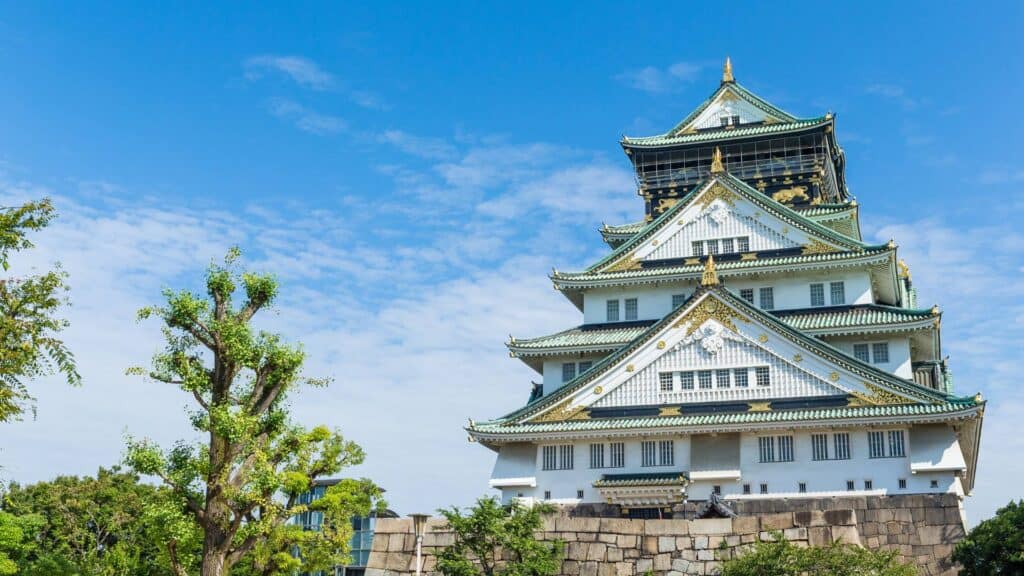
Osaka Castle is the most famous tourist attraction in Osaka, attracting many tourists from home and abroad. During a major renovation in the Heisei era, the decorative metal fittings and ornamentation of the orca were re-gilded, making them shine even more brightly. Valuable historical documents and works of art are on display in the keep. At night, the keep is illuminated to create a fantastic view of the castle. This is a not-to-be-missed spot when visiting Osaka.
Umeda
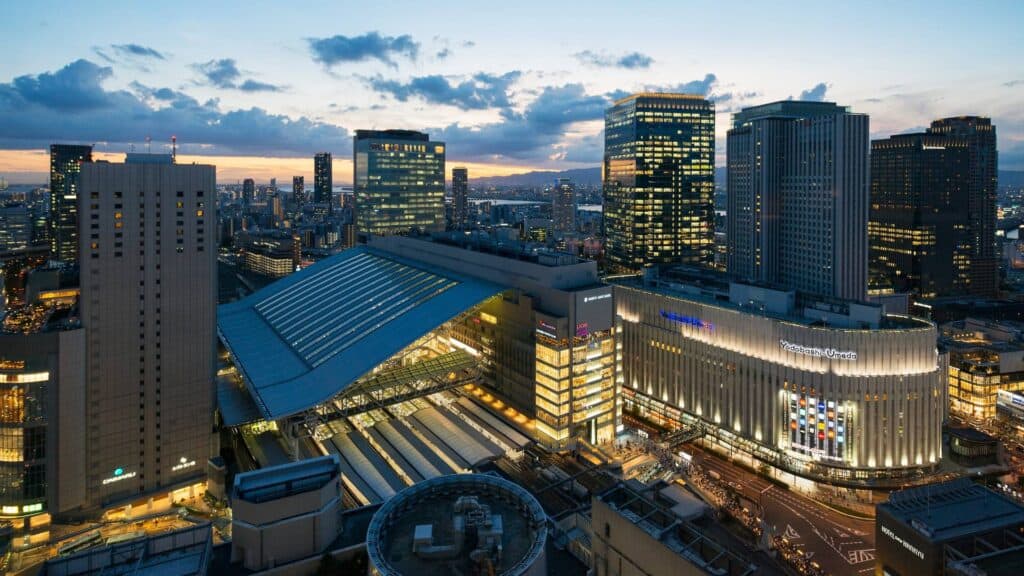
Umeda is one of Japan’s largest shopping and office districts, located in Osaka, and spreading across Kita-ku. Umeda operates as one of the main transport hubs for the city and has private railways that go to Kyoto and Kobe. In Umeda, there are many different restaurants around the station, department stores, old station buildings, and underground shopping. There are six major shopping malls in Umeda, each with its own unique atmosphere.
Dotonbori and Shinsaibashi-Suji Shopping Street
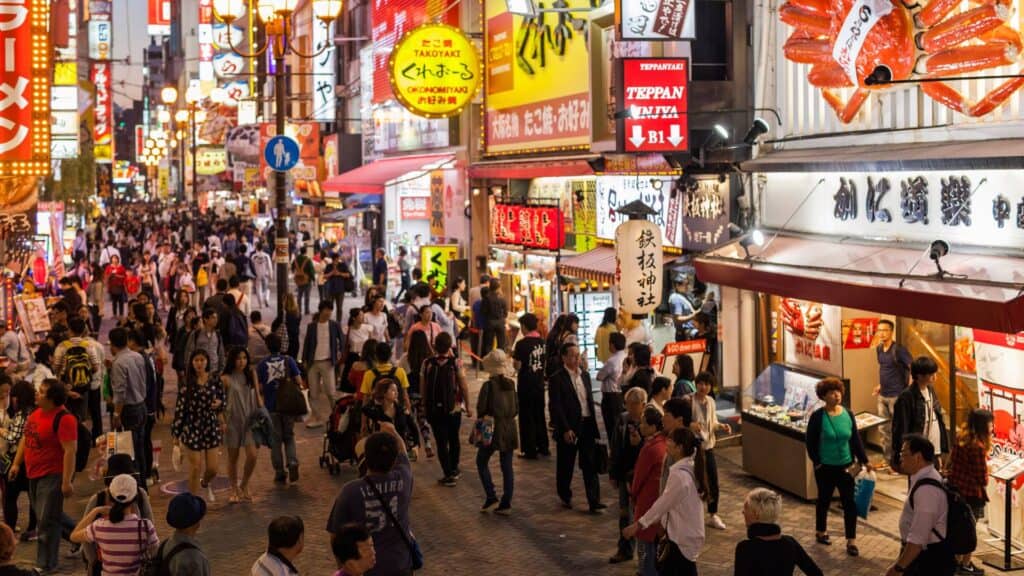
Dotonbori is one of the most popular destinations in Osaka for tourists. It runs along the Dotonbori canal and is packed full of bars, restaurants, and street food. Although it may not be the biggest area, it is full of food stalls and street vendors selling the most famous and traditional food and dishes that Japan is known for. The Shinsaibashisuji shopping street runs north-south for 580m from the south side of Nagahori Dori to Soemoncho Dori. It is lined with about 180 shops, including two major department stores, Daimaru Shinsaibashi, as well as clothing and restaurant shops, and attracts about 60,000 shoppers on weekdays and 120,000 on Sundays and public holidays.
For your 7th day in Japan, how about having some yakiniku for lunch and street food for dinner?
Lunch: Yakiniku, Dinner: Street food
Day 8: Nara

Nara Prefecture is home to some of Japan’s greatest World Heritage sites and national treasure buildings. Nara has a longer history than Kyoto, and you may notice it has an even deeper historical significance. Nara is characterised by its compact size and the fact that many of its tourist attractions can be visited on foot within the city limits. The area also features many ancient burial mounds from the old days, including the Kitora and Takamatsuzuka burial mounds. The fascinating history and culture of the ancient capital of Nara can be seen everywhere in the area. Incorporating Nara into your 10-day Japan itinerary will enrich your travel experience with deep historical insights.
Here’s an optional bonus: take a look at these tours if you’re looking for a more complete experience.
Todaiji Temple

In 754, the Tang Chinese monk Ganjin, who came to Japan to spread Buddhism, built the Kaitan-in at Todaiji Temple to bestow the Buddhist precepts on Emperor Shomu and Empress Dowager Komyo. The largest Buddha in Japan can be found in the wide precincts of Todaiji Temple. The sense of scale is immense, and when you see it for the first time, it is very impressive.
If you visit Todaiji Temple, be sure to visit Nigatsudo. It is the highest hall in the Senin district on the east side of Todaiji Temple and is known as the building where the event called “Omizutori,” an early spring event in Nara, is held. Ascending to Nigatsudo through two quiet stone-paved passages, one behind the Daibutsu-den and the other on the east side, you can see the cityscape of Nara from the spacious ‘stage’.
Kikuichi Monju Shiro Kanenaga Main Store/Mountain Cafe
A café in Nara specialises in selling cute deer manjū, an authentic Japanese flour-based pastry, and original pizza. The specialty is “Kasuga Shika Manju Kanoko,” which is made to resemble deer, unique to Nara Park! The manjū is baked in the store, so you can enjoy it fresh from the oven. The filling varies from day to day, so you will never get tired of the taste. This store has also inherited sword-making techniques from the Kamakura period, selling hammered blades and offering knife-sharpening workshops.
You can take a break, have lunch, or buy souvenirs while watching the deer that spend their time relaxing in front of the store, so be sure to stop by when you visit Nara Park.
Nara Park

Nara Park is a city park located in Nara City, Nara Prefecture, with a total area of about 502.38 hectares. The park includes Mt. Kasuga and Mt. Wakakusa, as well as Kofuku-ji Temple, Todai-ji Temple, and Kasuga-taisha Shrine, and is dotted with many national treasures and World Heritage Sites. About 1,300 semi-wild deer play in groups in the park, which has a beautiful lawn and a 1,000-year-old pine tree. The deer can be fed with special deer crackers, sold around the park for 200 yen. The friendly deer will even “bow” before earning their treats.
Mt. Wakakusa for the Night view

“Wakakusayama” is located in Nara Park, and the entire mountain is covered with grass. Also known as Mt. Mikasa, it is one of the most recommended sightseeing spots in Nara where you can see the Great Buddha Hall and the city of Nara, and you can also enjoy a beautiful night view. Because it is in Nara Park, deer will also come by. It’s a 5-minute walk from the “Kasuga Taisha Honden” bus stop, and it’s located in Nara Park, so it’s recommended that you visit it along with other spots for a smooth sightseeing experience.
Day 9: Okayama
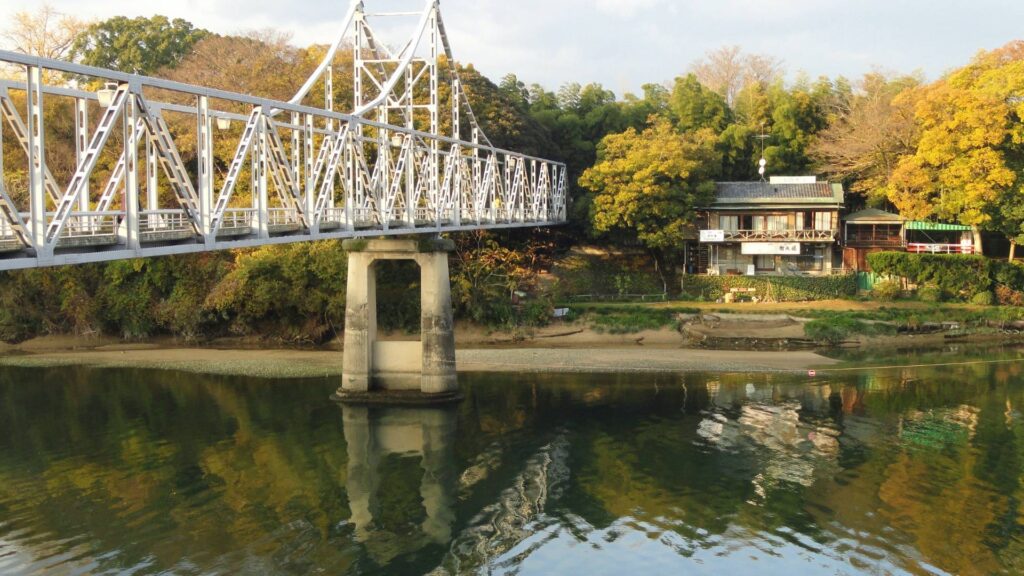
Okayama City developed as a castle town during the Edo period (1603-1867), eventually growing to become the second-largest city in the Chugoku region, following Hiroshima. Okayama is known for its beautiful gardens, parks, and its place in Japanese folklore.
Korakuen Garden

Recognised as one of the three best gardens in all of Japan, Okayama’s Korakuen Garden features picture-perfect cherry blossom groves in the spring and deep red trees in the autumn. In summer, Japan tends to get very hot. For this reason, why not stay a little late at the park and experience the Okayama Garden of Dreams event, when the space is lit by candles and lights?
Okayama Castle
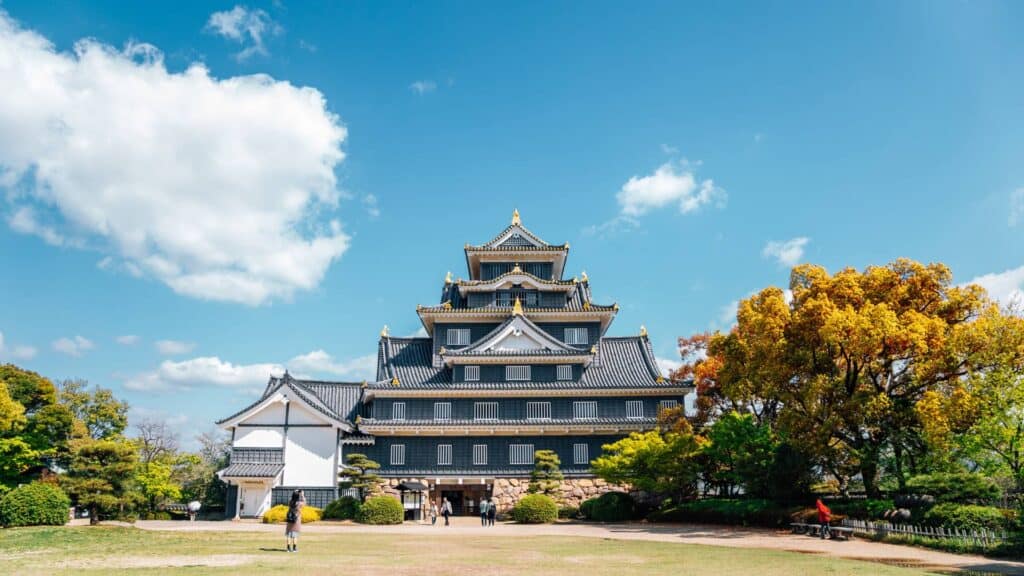
While strolling around the Korakuen Garden, you’re sure to spot Okayama Castle overlooking the greenery from across the Asahi River. Originally constructed in 1597 and rebuilt after its destruction in WWII, “Crow Castle” sports a beautifully sophisticated black exterior. The interior serves as a museum documenting the history of the building, with access to the inner sanctuary being free.
Momotaro and Okayama

Okayama serves as the backdrop to the legendary Japanese folktale of Momotaro, in which a child born from a giant peach battles demons with his three friends: monkey, pheasant, and dog. While you explore Okayama, you may stumble upon depictions of the tale on manholes across the city. There is also a large statue of Momotaro and his companions outside Okayama Station. See how many Momotaros you can find!
Try some famous Okayama Peaches
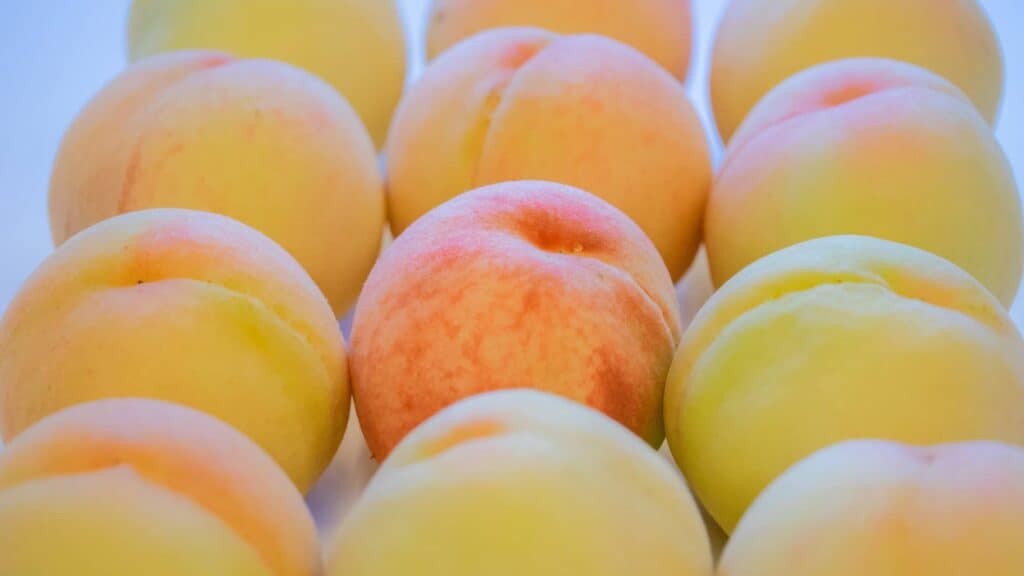
Okayama Prefecture is known for having some of the best peaches in all of Japan. If you visit in the summer months, be sure to try some locally grown peaches by going to a local orchard and picking them yourself.
Kurashiki
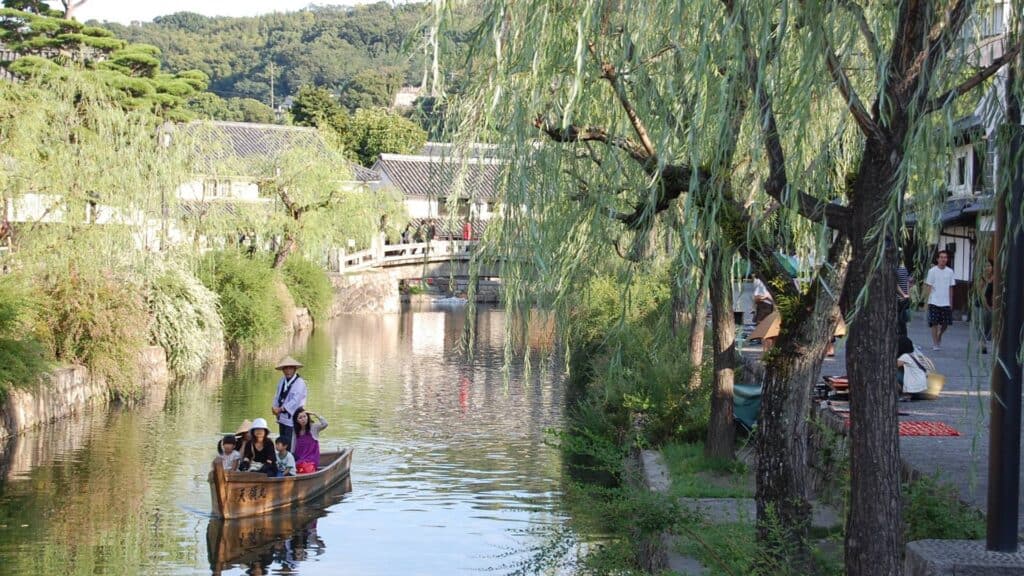
This picturesque town is just 15 minutes away from Okayama by train and makes for an amazing day trip. The canal district is well known for its weeping willows and for the white-walled and black-tiled storehouses which line it, now serving as adorable cafés and shops. It’s recommended to arrive early to explore the quiet space before crowds begin to form around 9 am. The canal also has boat rides available starting at 9:30 am, though they are in Japanese. If the language barrier is an issue, why not visit the Ohara Museum instead? This art space has a 2000 yen adult admission cost but features many well-known artists, including Picasso and Gauguin.
Day 10: Himeji
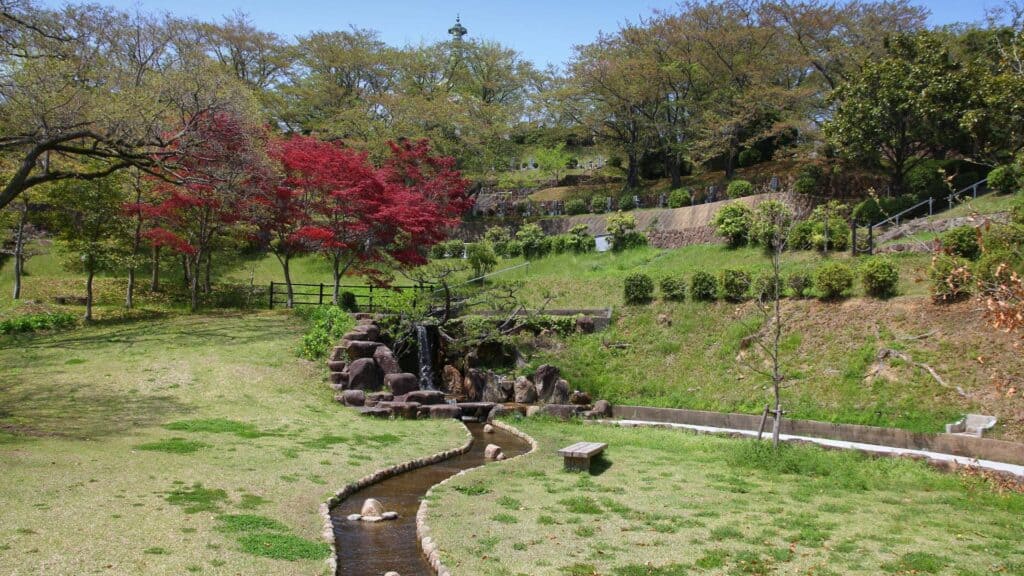
Himeji is known primarily for its famous castle, but there’s much more to this city. Just a 20-minute train ride from Okayama and filled with parks, cherry trees, and history, Himeji is a city that has stood the test of time.
Himeji Castle

Himeji Castle, dating back to 1333, is famous for its white keep walls, earning it the nickname “White Egret” or “White Heron” castle. Considered by many to be the most beautiful castle in Japan, Himeji is also one of only twelve original castles that has survived to this day. Even while thousands of surrounding buildings were burnt down in air raids during WWII, and after receiving a direct hit from a firebomb, Himeji Castle stood strong.
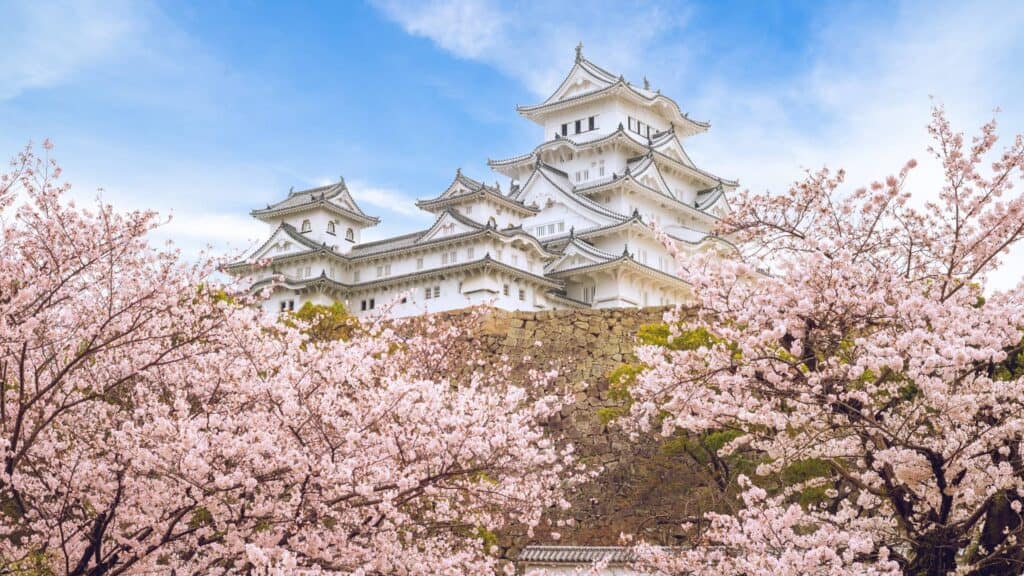
Within the castle grounds, visitors can access the third bailey’s cherry-lined lawn for free by entering through the Otemon Gate. This space is very popular for viewing both the castle and the cherry blossoms in the spring months, especially in April. Past this area and into the paid section, visitors can enter the castle, which houses sparse furniture and a few multilingual signs explaining the design and defensive features of the structure. By slowly making your way up steep stairways, you will eventually reach a small shrine room at the top of Himeji Castle with panoramic views of the surrounding area!
Before leaving the paid grounds of the keep, it is very important to visit the West Bailey, which used to serve as the grounds for the princess. This space offers an alternative view of the castle and is breathtaking. Himeji Castle is Japan’s most visited castle, a national treasure, and a UNESCO World Heritage Site. For this reason, it’s important to arrive with plenty of time available, should there be a queue to get in.
Kōko-en

Located next to Himeji Castle, Kōko-en is a Japanese garden constructed in 1992 in commemoration of the 100-year anniversary of the Himeji municipality. The green space features nine different gardens over a space of 3.5 hectares, ranging from cherry groves to a koi pond. Visitors can also enjoy views of Himeji Castle while sipping on green tea.
A Comprehensive 10-Day Adventure Across Japan
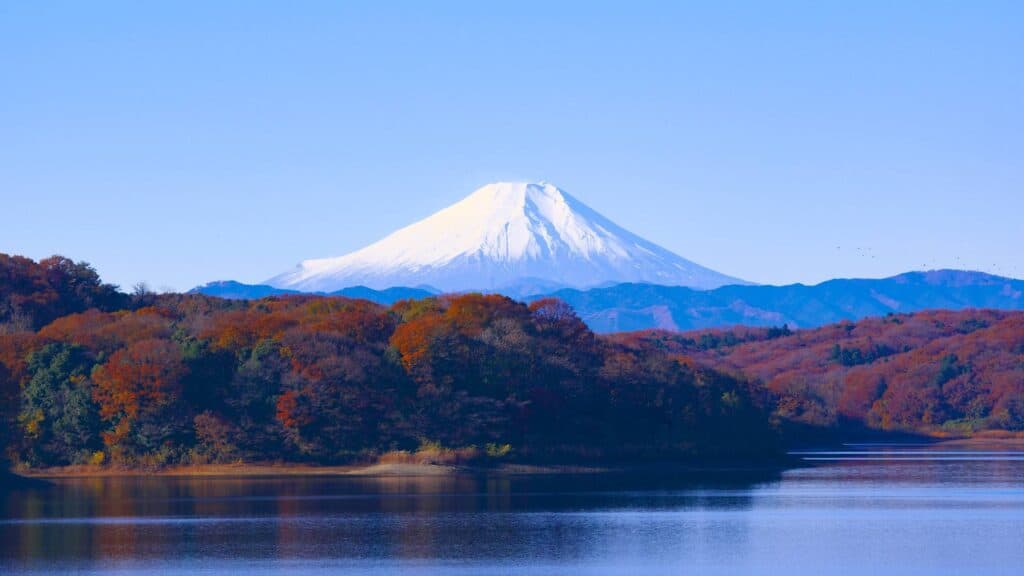
So there we have it, 10 full days of adventuring across Japan, seeing the many different sights and places that this beautiful country is famous for. From the bustling streets of Tokyo and the historic temples of Kyoto to the serene landscapes of Nara and the majestic Himeji Castle, this itinerary offers a diverse and immersive experience.
You can use this jam-packed guide in full or simply pick a few places from the list to visit, tailoring your journey to fit your interests and schedule. However, if you want an itineray more personalised to your preferences, be sure to take advantage of Flip Travel Planner, where we provide our expertise and knowledge about Japan, to help you make the most out of your trip. We will recommend everything personalised and customised to you and your trip.
To get the most out of your trip, you can also join one of our guided tours. Try the Tokyo Food & Drinks Bar Tour to explore the city’s nightlife and enjoy local drinks. Or, join the Kyoto Must-Sees and Local Gems Tour to learn about traditional Japanese culture. These tours offer unique and memorable experiences.
Whether you’re exploring the vibrant culture, indulging in delicious cuisine, or marvelling at the stunning architecture, Japan promises an unforgettable adventure. Remember, each destination on this list has its own unique charm and significance, making every moment of your trip truly special. Enjoy your travels!

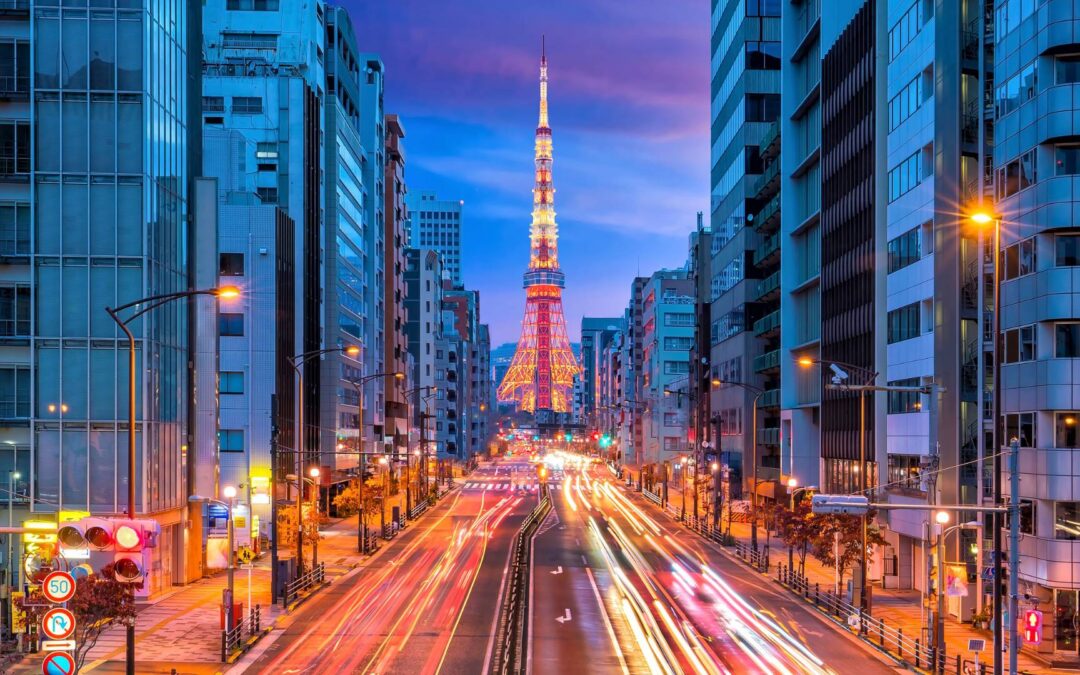
Trackbacks/Pingbacks